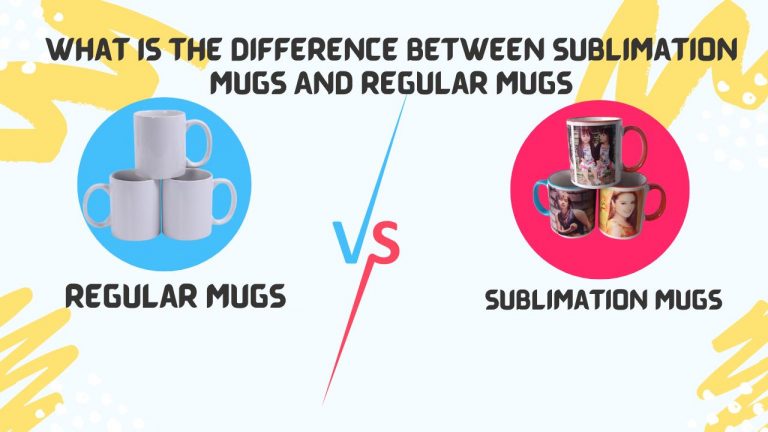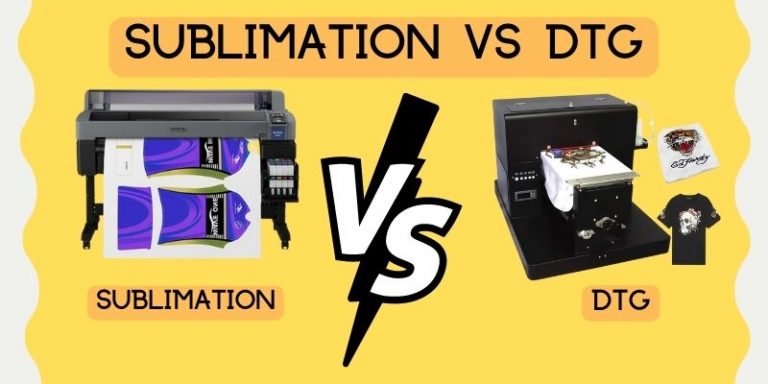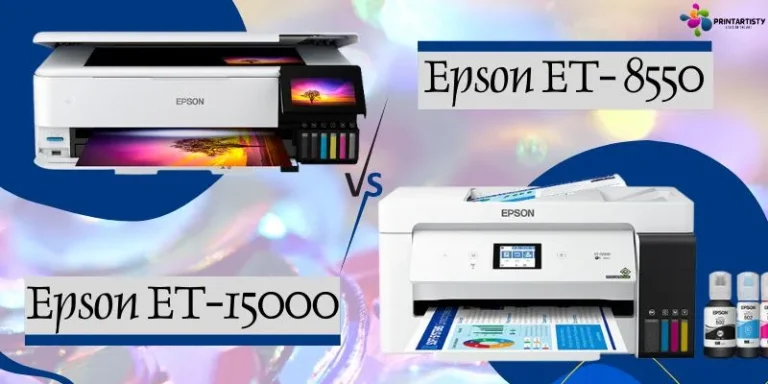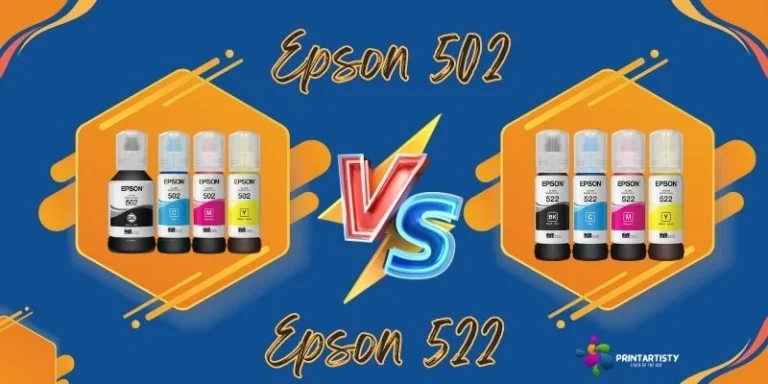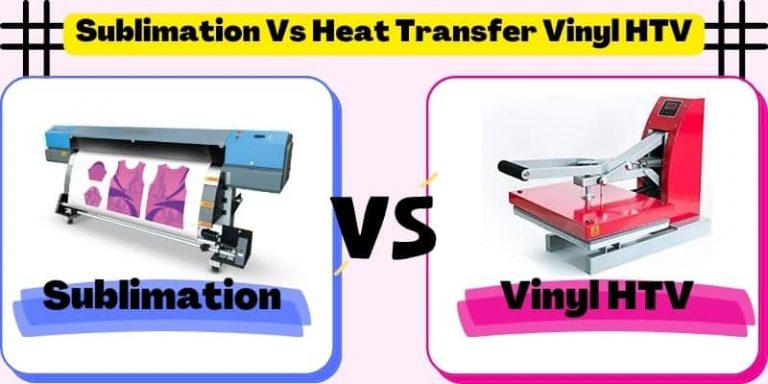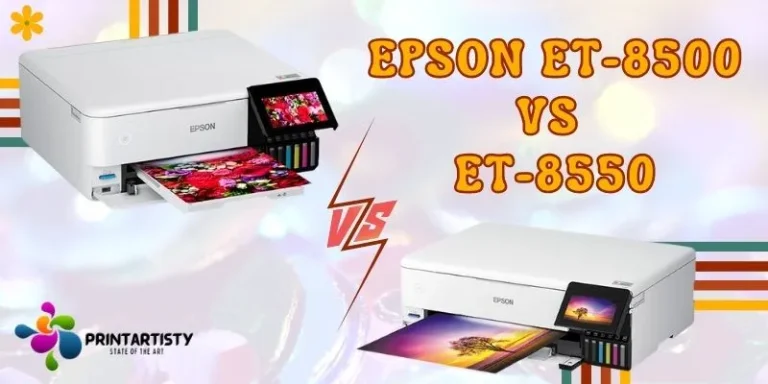Stickers Vs Decals | What Is The Main Difference Between Them?
Peeling back the layers of the stickers versus decals debate is like comparing tangerines to oranges at first glance; they may seem similar, but they’re different in many ways including their shape and texture. Both have many similarities as decals are a special type of sticker made from special film and normal sticker is made from paper-based material. Their application process, surface of application, and construction material are distinct. Now let’s shed some light on the core differences between stickers vs decals.
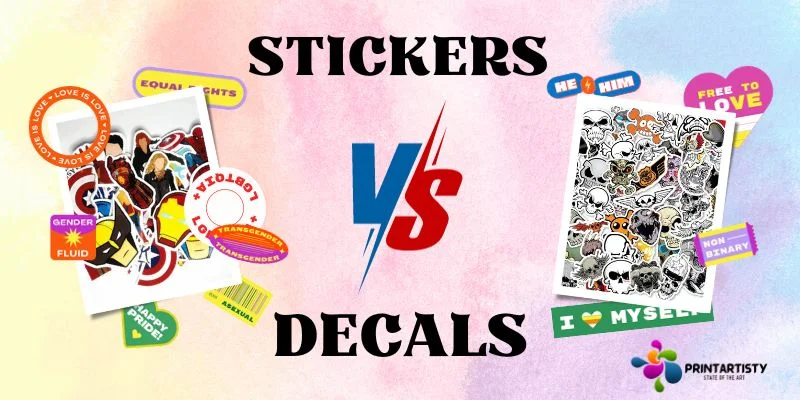
What is The Main Difference Between Stickers Vs Decals
While both stickers and decals may appear similar at first glance, the primary difference lies in their intended use and application method. A sticker is a printed adhesive paper that is either plastic-based material called vinyl or paper-based with an adhesive backing.
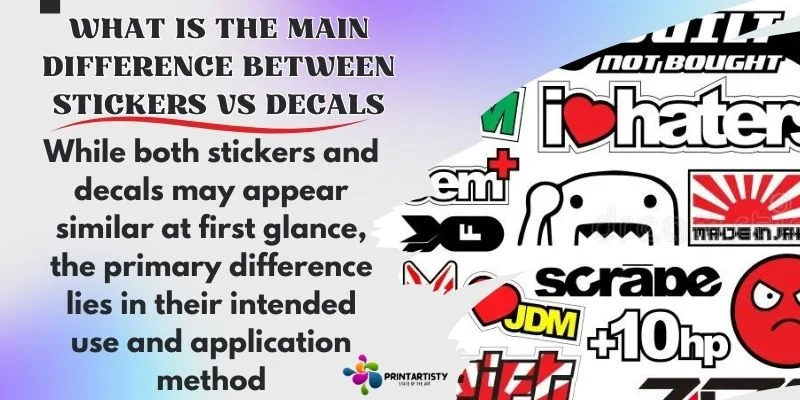
They’re meant to be stuck on surfaces but smooth and limited for decorative or informational purposes and are usually not intended for long-term use.
On the other hand, a decal is also produced with vinyl or a special film called a waterslide decal to transfer onto another hard surface. The term decal originates from the French word ‘decouper’, meaning to cut out.
Check Printable Vinyl Sheets Vs Sticker Paper
Decals are commonly used for detailed artwork, and unlike stickers, they’re designed for long-term use on curved as well as on a wide range of textures. They’re also often applied using heat or water, which can make them a bit more difficult to apply than stickers.
The Basics of Stickers
Starting with how they’re made and applied. Essentially, stickers are printed on adhesive material that is sticker paper, cut into various shapes and sizes, and then peeled off and stuck to surfaces. They’re commonly used for decorative or informational purposes.
It begins with graphic design, where artists create the sticker’s design digitally. Then, the design is printed onto vinyl or sticker paper using high-quality printers for vinyl stickers.
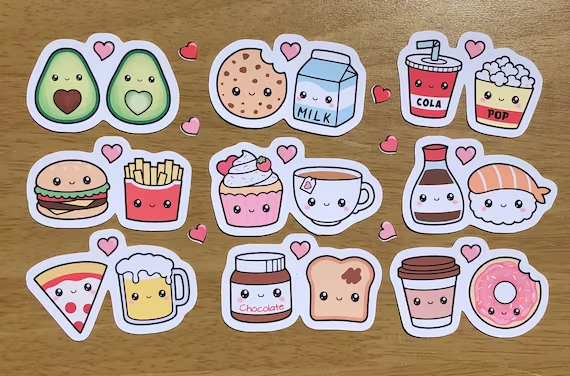
The printed material is then machine-cut into the desired shape. Die-cutting, a common method, allows for intricate shapes and designs. The stickers are then coated with a protective layer such as lamination to enhance their durability in harsh conditions.
The Basics of Decals
Decals are similar to stickers in many ways, but they have unique characteristics that set them apart. The decal design is prepared on special paper like a waterslide decal for transfer onto another that can be either porcelain or metal.
Decals are typically more durable than stickers. They’re commonly found on vehicles, storefronts, and any other surface exposed to the elements.
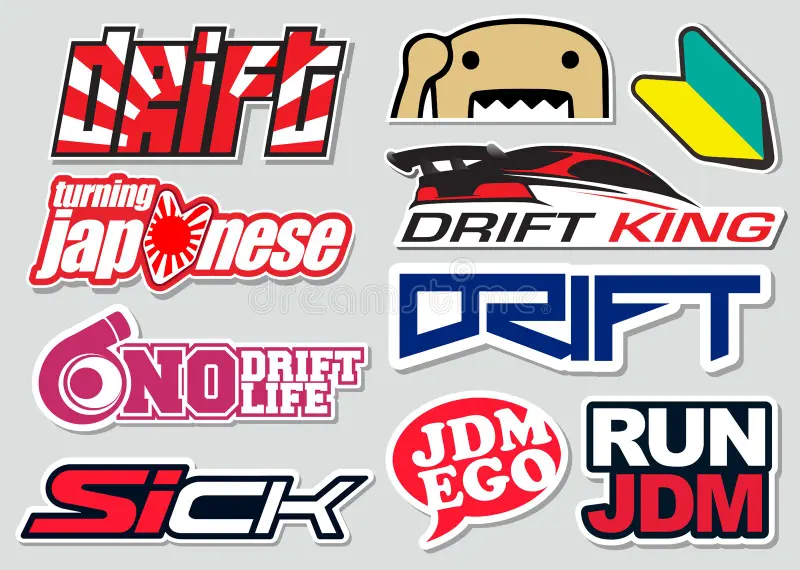
Installation is another area where decals differ from stickers. They’re not just peeled and stuck on. Usually, you’ll need to carefully position the decal, apply it, and then remove a protective layer to reveal the design.
They’re typically used for more complex imagery for complex surfaces, like company logos or detailed illustrations, as they can handle this level of detail better than stickers.
Materials Used for Stickers Making
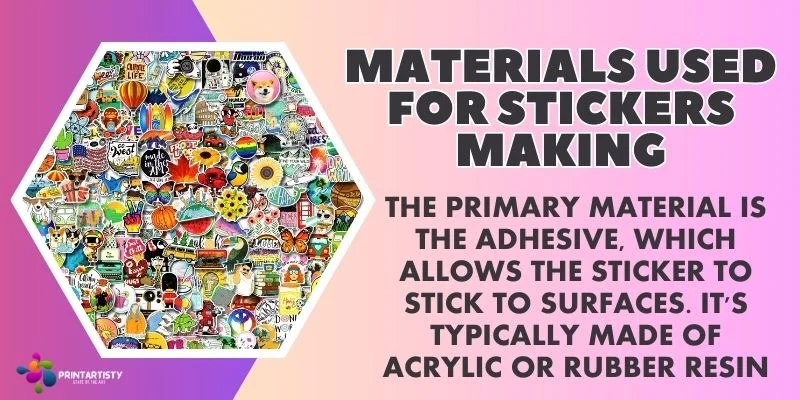
The primary material is the adhesive, which allows the sticker to stick to surfaces. It’s typically made of acrylic or rubber resin.
Next, we have the substrate or the sticker material itself. This is usually made of vinyl or paper-based material. Vinyl stickers are more flexible, so they can stick to curved surfaces. Paper stickers are more economical but less durable. Paper stickers are known as ideal for indoor use.
The third material is the laminate. It’s used to protect the sticker from damage, such as scratches or exposure to UV rays. Matte and glossy are the two main types of laminates used. Matte gives a subdued, professional look, while glossy makes colors pop and adds vibrancy. However, the lamination process is optional.
Lastly, we can’t forget the backing paper, which protects the adhesive before it is peeled off and is ready to be applied. It’s commonly made from silicone-coated paper.
Decal Construction Materials
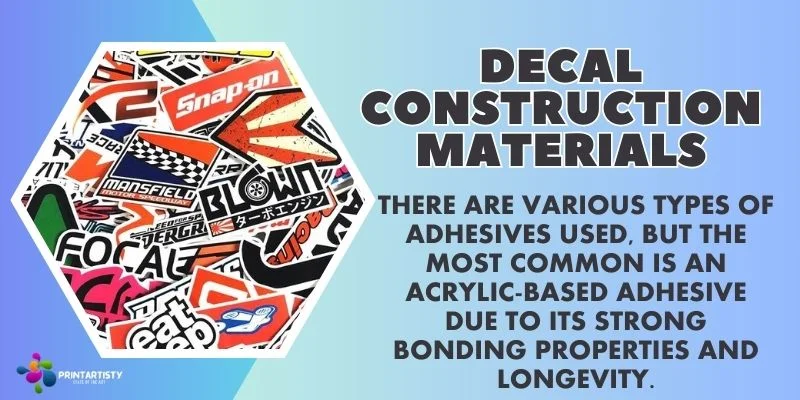
The primary material used in decal production is vinyl. The next key component of a decal is the adhesive. This is what allows the decal to stick to different surfaces. There are various types of adhesives used, but the most common is an acrylic-based adhesive due to its strong bonding properties and longevity.
The third crucial part of a decal is the backing paper, also known as the liner. This protects the adhesive until the decal is ready to be applied. The liner is typically made from silicone-coated paper which allows for easy removal when it’s time for application.
Lastly, there’s the laminate or topcoat. This is applied over the printed decal to protect it from scratches, UV light, and other potential damage.
How to Apply Stickers
Decal Application Process
What Are The Stickers Used For
From personalizing laptops to promoting businesses, stickers serve a multitude of purposes. Stickers can be used for branding. Handed out at events, and even used them as part of direct mail campaigns.
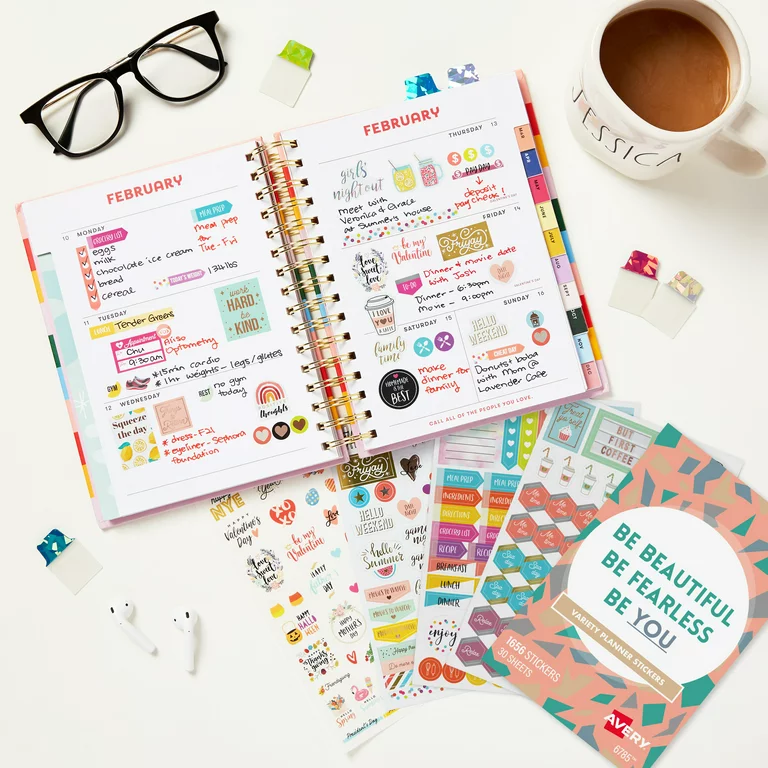
They also can be for personal expression. From decorating laptops with quirky designs to creating wall art in your home, they allow you to add a personal touch to your surroundings.
They can be used to organize your workspace, label your belongings, and even provide instructions. Additionally, you can use planner stickers to organize work and daily reminders.
What Are The Decals Used For
Just like stickers, decals also have a myriad of applications, primarily in the areas of decoration and advertising. They’re often seen on cars, graffiti art, helmets, laptops, and even in home decor. They’re typically larger and more detailed than traditional stickers.
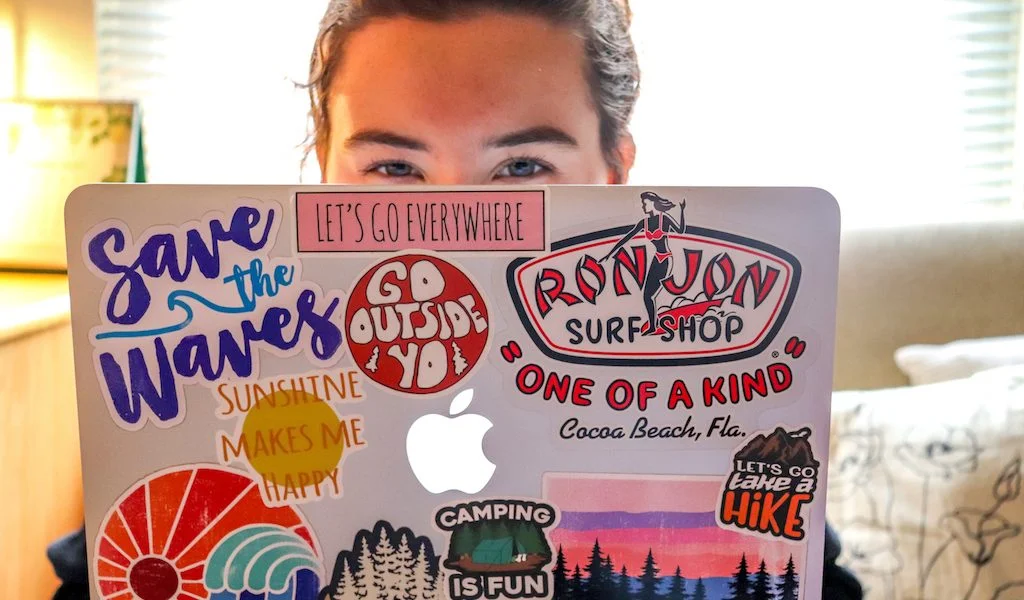
In the advertising world, decals are used on vehicles for mobile advertising. Decals also dress up storefront windows, drawing attention to sales or specials and encouraging foot traffic. They can easily transform an empty wall into an artwork.
Cost Of Decals & Types

They’re simple, easy to apply, and can start as low as a dollar or two. These are typically used for basic shapes, lettering, or single-color designs.
On the more expensive side, you’ve got your die-cut and full-color decals. These involve more complex designs, multiple colors, or special finishes like metallic or glitter. Die-cut decals can range from $10 to $50.
Full-color decals are pricier, often starting at $20, and can go up to $100 or more for larger sizes or designs.
Cost & Types Of Stickers

Much like decals, stickers also offer a broad spectrum in terms of pricing and design complexity, ranging from budget-friendly options to high-end custom designs. You can grab a basic, mass-produced sticker for pennies, while customized designs may cost a bit more.
Stickers come in various types, paper stickers are the cheapest, but they aren’t very durable. They’re perfect if your pocket doesn’t allow you to spend more for a one-time event. On the flip side, vinyl stickers, are pricier but offer better longevity.
Reflective and holographic stickers are other types you might come across. They’re typically more costly due to their special features. Reflective stickers are great for safety purposes, while holographic ones add a quirky, eye-catching effect. You can read all types of stickers here.
How Do You Tell If A Sticker Is A Decal?
Initially, you mightn’t see any difference because they’re both adhesive graphics, but the key difference lies in how they’re used.
Stickers are typically simpler in design and usually applied directly on the surface. They’re often made of paper or vinyl and tend to stick permanently once applied. If you try to peel off a sticker, it’s likely to leave a residue or even damage the surface.
Decals, on the other hand, are more complex and are often designed to be moved or removed easily from surfaces. They’re typically printed on a special paper vinyl or transparent film and are applied using water or heat. Because of this, they often have a clear or white background that separates the design from the adhesive material.
Conclusion
So, in a nutshell, while stickers and decals may seem similar, they’re notably different. Stickers are typically simpler, made of vinyl or paper, and ideal for one-time use. On the other hand, decals, generally made of vinyl, are designed for longevity and can be reused. The cost and types differ, too, as does the printing process. To tell if it’s a decal, just check if it’s designed to be moved and reused without losing its stickiness.

